In my role I have been afforded the luxury of visiting many facilities, be they content owner, post production houses or playout facilities, take it from me that each and every place I visit addresses workflow requirements in a slightly different way. One such example is:
Around file preparation, getting the asset ready for delivery to a customer, readying for web streaming or creating a master which can reside on central storage in readiness for creation of a deliverable at a later date. While the overall principal is the same the approach is quite different.
All too often I observe a file being played in its entirety into a specially designed QC booth for a highly trained QC analyst to review (once for each stereo pair), noting timecodes of problems as it plays down. This noted information is then transcribed into an EDL which is passed to the editing department so another highly trained staff member can remove the identified portions of file before publishing. While this is one approach, another more cost-effective approach is to use the AmberFin UQC offering. The remainder of this document describes how, in 4 steps, the same can be achieved without multiple systems, multiple people and file moves, saving time and ultimately reducing the cost of asset preparation.
Step 1:
First, perform a QC analysis of the asset using one or more of the QC tools available in the AmberFin UQC offering. This can be achieved either by instruction from a MAM, watchfolder drop or manually driving iCR via the GUI whichever your workflow allows.
Once the analysis is complete any potential problem areas are highlighted in a QCML file, a QC report which can live with the asset for the duration of its lifecycle, Loading the asset into the iCR player also loads this QC data collected during analysis into the timeline giving a detailed visual representation of any errors\potential errors detected.
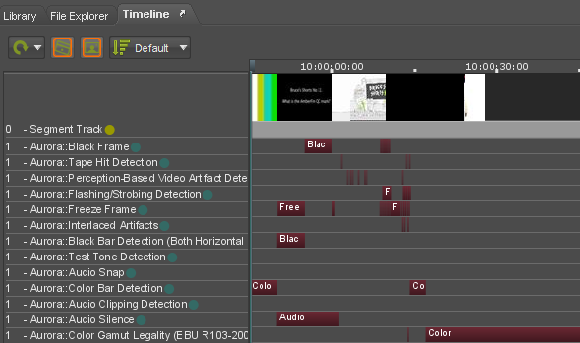
Step 2:
Next is a QC review step, the analyst can determine whether highlighted portions of the file are true issues or whether they are within tolerance and can be allowed in the output, marking each as they go.
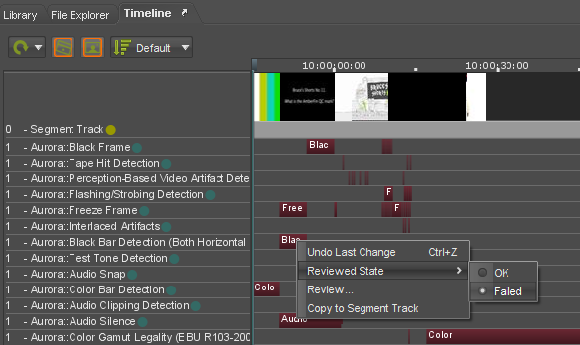
A simple right click on each of the highlighted errors and ‘Copy to Segment Track’ adds a yellow ‘keep’ segment.
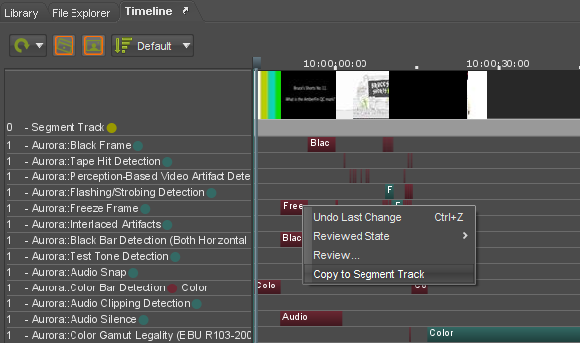
Step 3:
Once all potential problem areas have been reviewed, those within tolerance have been passed and those true problems have been added to the segment track we can flip them from ‘Keep’ segments to ‘Discard’ segments before submitting to the file cut and splice tool.
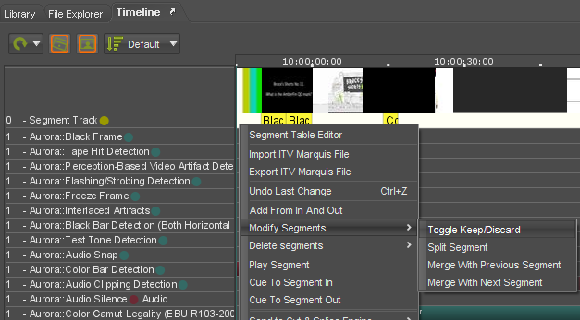
The result is an internal EDL which can be passed to the cut and splice tool with a single click.
Step 4:
Finally, submission of a transcode from the file cut and splice tool will create your clean deliverable in the format required.
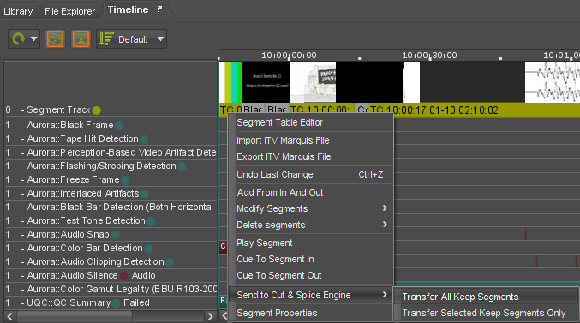
Based on the above I am sure you will agree with me that UQC and the assisted QC approach allows for better use of QC analysts and booths, allowing focus to be placed on potential problem areas identified during the QC process rather than entire assets, freeing up staff and resource time, allowing faster delivery and ultimately saving money.
Featured in: Dalet AmberFin | File-Based Workflows | Transcoding |
With 30 years in the industry, Bruce looks after Media Technology for Dalet. An engineer who designed antennas, ASICs, software, algorithms, systems and standards, Bruce is best known for being @MrMXF and you can get his book on Amazon.
More Articles By Bruce



